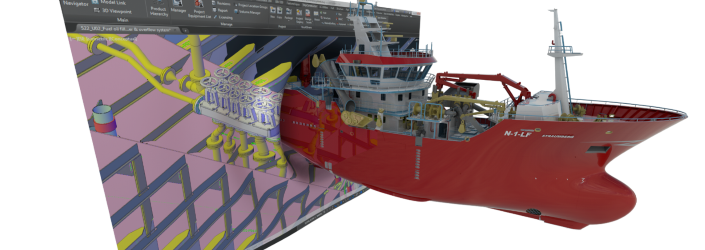
For most shipbuilders there is a vision of supporting a paperless environment. Even though many still laugh at the idea, it is a fact that most shipyards are trying to move towards at least a Less Paper environment. One strategy I have seen a lot, at least in the US industry, is the implementation of Model Based Enterprise. I have discussed this before two years ago in a blog Model-Based Enterprise Summit 2014.
Even though I am uncertain of specific aspects of MBE, the overall view is very interesting. I have talked to several people in the shipbuilding industry as well as other industries about their journey to attaining the highest level of MBE. A common challenge I have heard is that changing from 2D deliverables to a 3D+ deliverable requires some significant changes to where we make and record certain decisions.
The easiest example which illustrates this challenge is how we define and create our assembly manufacturing aids. Currently we define a build strategy that details how we will construct the ship. The example I usually provide non-shipbuilders is with the build strategy we can create Ikea-like step-by-step drawings of how to build the ship. While in theory that is true, most of us do not go into the detail which would be needed for a step-by-step instruction booklet. We only go down to a certain detail level and then leave the lower level details to our experienced production floor personnel.
For most Model Based Enterprise implementations, they require (or strongly recommend) that those details are included in the technical package being delivered to the production floor. This is where the challenge begins. Adding this additional detail does require more work in engineering as well as more knowledge of how to produce the product with the facility’s constraints. There are a lot of benefits with this strategy:
- Capturing knowledge that we can re-use for future designs
- Ability to leverage modern 3D/4D visualization tools to see results of several variations
- Guarantee (as much as possible) how it will be built
- Create interactive build instructions for less experienced shipbuilding trades person
- And many more
However, this also comes at a cost which might not be initially apparent or is not fully understood. By detailing more levels in the build strategy, down to the workstation level, there are many more technical data packages which are delivered to the production floor. If you do not change your process you will be delivering orders of magnitude more packages.
If we are detailing every step in the process, imagine what is required if we make a simple change. All parent data packages will be required to be updated. They are mostly updated automatically but if we do not evolve our current processes to adapt to this new delivery mechanism we will be overwhelmed with data packages.
Most shipyards do not leverage today’s data package management tools such as PDMs or PLM systems. That puts additional strain on someone on the production floor to find and discover what packages are required to accomplish their weekly tasks. For one block or unit there can be thousands of data packages.
Closing Remarks
Shipbuilding is moving towards a less paper environment. I am not sure when/if we will reach a paperless environment. I always wanted to know how much $ a shipyard spends on paper which I expect to be very highJ
There are a lot of benefits of being more digital and the one I see driving this initiative the most is the requirement to support less experienced shop floor personnel.
However, just trading our 2D production deliverables to 3D technical data packages will not be the answer. There are other fundamental changes that have to happen to our organizations to support a more “modern” approach. Being able to capture the knowledge which has been traditionally left to the shop foreman in the engineered production package is just one of the many we have to overcome.
I will look forward to seeing how other industries as well as our industry progress in their journey to a paperless environment vision.
